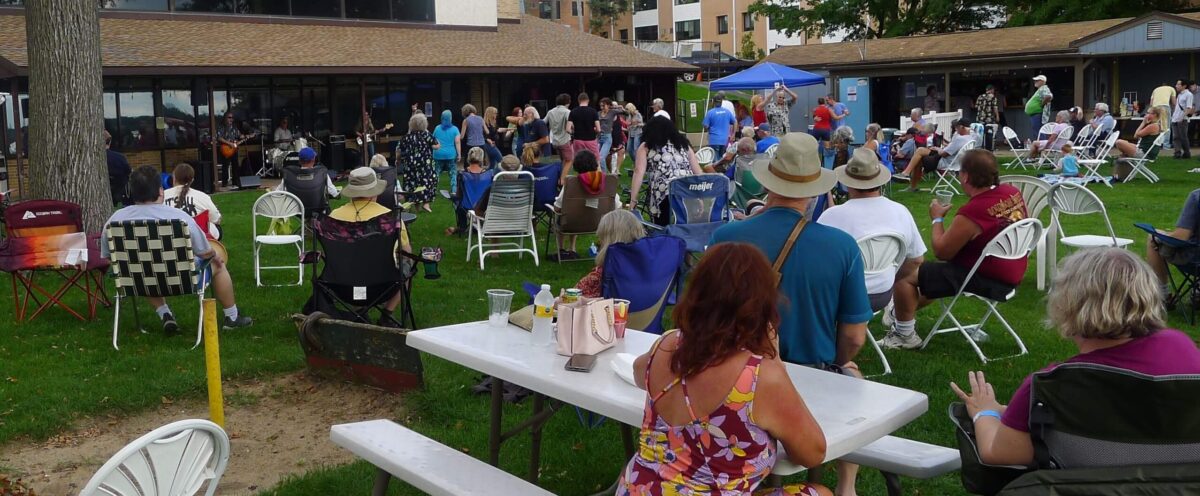By Eric Heiligenstein, MD (aka Too Sick Charlie. )
Rock-n-Roll was invented by a woman who played the electric guitar in ways very few people could have ever imagined.
The Godmother of rock music is Sister Rosetta Tharpe. Her Gibson guitar and voice changed the trajectory of rock & roll, blues, and soul music. She influenced individual musicians such as Tina Turner and Aretha Franklin, while her guitar style had a significant impact on Chuck Berry, Elvis Presley, Keith Richards and innumerable others.
Born Rosetta Nubin in Cotton Plant, Arkansas in 1915, her parents were both passionate about music. She grew up in the Church of God in Christ where her mother was the preacher. As in many Black churches, religious worship was conducted through musical expression. Rosetta was described as a music prodigy and at age four she began singing and playing her guitar in the church.
She later traveled with her mother around the South, performing in churches as Little Rosetta Nubin, billed as the “Singing and Guitar Playing Miracle.” She became Sister Rosetta Tharpe in 1938, after a brief marriage to her first husband Thomas J. Tharpe ended. She then moved with her mother to New York City, by way of Chicago. (Tharpe and her husband legally divorced in 1943.) The first songs she recorded on Decca Records in New York, “My Man and I,” “That’s All,” “The Lonesome Road,” and “Rock Me,” were instant hits and made her the first commercially successful gospel artist.
She later began performing in Harlem nightclubs where she played gospel songs with astonishing self assurance and flair. By the 1940s, she distorted the sound of her guitar, a technique that was completely original at the time and would be copied by legions of rock guitarists in the future. A woman playing guitar and singing spiritual songs in nightclubs was unheard of. Gospel singers didn’t cross over to secular music. You were one or the other. She did it anyway and lost many of her religious fans.
Sister Rosetta Tharpe continued to tour and make new music throughout the fifties and into the sixties. In May 1964 she performed a legendary show as part of the American Folk Blues Festival. Filmed at an abandoned railroad station in Chorlton-cum-Hardy, Manchester, it was broadcast nationwide in England. The young audience sat on one platform while the performers played from the other side of the tracks. The program- makers placed tubs, barrels and other items on the platform to apparently resemble the porch of a southern shack.
The producers arranged a tacky entrance for her. She pulls up in a horse and buggy and New Orleans jazz singer Cousin Joe Pleasant helps her out of the carriage. Dressed in a luxurious fur coat, Tharpe was rock-and-roll royalty whether people knew it or not. She then walks across the edge of the platform and picks up her guitar.
Tharpe hits a chord but is in the wrong key. She turns to the band for the right key and then the magic happens. Tharpe hadn’t planned to sing the gospel number “Didn’t It Rain”, but due to a downpour that preceded her entrance, she made the impromptu decision and the producers agreed. As this performance demonstrates, her voice, charisma and guitar playing made her one of the most influential and under-rated musical talents of all time.
Nine years later at age 57, Sister Rosetta Tharpe died from a stroke and complications of diabetes. She was buried in Philadelphia in an unmarked grave. A headstone erected decades after her death bears these words: “She would sing until you cried, and then she would sing until you danced for joy. She kept the church alive and the saints rejoicing.” She was posthumously inducted into Rock and Roll Hall of Fame in 2018.
Performance link for “Didn’t It Rain”
https://youtu.be/8hofu4jcyGU
Watch her move at 3:30 of the video. If this doesn’t give you chills, then I can’t help you… “Didn’t It Rain”, sometimes titled as “Oh, Didn’t It Rain”, is a spiritual about Noah’s flood. In 1919 it appeared as sheet music in an arrangement for voice and piano by Henry Thacker Burleigh (1866–1949).
If you’re like me and were stunned after watching her virtuosity, here’s another performance link for her hit “That’s All” (date unknown but likely 1940’s). Her guitar intro is ample proof of her genius.




